#roman catholic history
Text
Understanding the Term "Roman Catholic" | Origin, Usage, and Criticisms

Roman Catholic
The term "Roman Catholic" is often used in official documents to describe members of the Catholic Church, as a way of recognizing those who reject the authority of the Church. Some Anglicans view the Catholic Church as consisting of three main branches: Roman, Anglo, and Greek. However, this view has been shown to be incorrect. For more information on the term "Catholic", please refer to the articles on "church" and "Catholic".
Definition
The "Oxford English Dictionary" defines "Roman Catholic" as follows.
“The use of this composite term in place of the simple Roman, Romanist, or Romish; which had acquired an invidious sense, appears to have arisen in the early years of the seventeenth century. For conciliatory reasons it was employed in the negotiations connected with the Spanish Match (1618-1624) and appears in formal documents relating to this printed by Rushworth (I, 85-89). After that date it was generally adopted as a non-controversial term and has long been the recognized legal and official designation, though in ordinary use Catholic alone is very frequently employed. (New Oxford Dict., VIII, 766)”
Illustrative quotations follow. The earliest is from Edwin Sandys' "Europae Speculum" of 1605: "Some Roman Catholics won't say grace when a Protestant is present." Day's "Festivals" of 1615 contrasts "Roman Catholics" with "good, true Catholics.”
Origin of the Term
The Oxford Dictionary's account of the origin of the term "Roman Catholic" is not entirely satisfactory. The term is actually much older than believed, dating back to the 16th century when English Catholics under persecution defended the lawfulness of attending Protestant services. In response, Protestant divines, such as Father Persons and Robert Crowley, used the term "Roman Catholic" or "Romish Catholic" in their writings. They resented the Roman Catholic Church's claim to the term "Catholic" and insisted that the Reformers were the true Catholic Church. The term "Roman Catholic" originated from this Protestant view, and was used to qualify the term "Catholic" when referring to their opponents. Crowley even referred to his opponents as "Protestant Catholics.”
On the other hand the evidence seems to show that the Catholics of the reign of Elizabeth and James I were by no means willing to admit any other designation for themselves than the unqualified name Catholic. Father Southwell's "Humble Supplication to her Majesty" (1591), though criticized by some as over-adulatory in tone, always uses the simple word. What is more surprising, the same may be said of various addresses to the Crown drafted under the inspiration of the "Appellant" clergy, who were suspected by their opponents of subservience to the government and of minimizing in matters of dogma. This feature is very conspicuous, to take a single example, in "the Protestation of allegiance" drawn up by thirteen missioners, 31 Jan., 1603, in which they renounce all thought of "restoring the Catholic religion by the sword", profess their willingness "to persuade all Catholics to do the same" and conclude by declaring themselves ready on the one hand "to spend their blood in the defence of her Majesty" but on the other "rather to lose their lives than infringe the lawful authority of Christ's Catholic Church" (Tierney-Dodd, III, p. cxc). We find similar language used in Ireland in the negotiations carried on by Tyrone in behalf of his Catholic countrymen. Certain apparent exceptions to this uniformity of practice can be readily explained. To begin with we do find that Catholics not unfrequently use the inverted form of the name "Roman Catholic" and speak of the "Catholic Roman faith" or religion. An early example is to be found in a little controversial tract of 1575 called "a Notable Discourse" where we read for example that the heretics of old "preached that the Pope was Antichriste, shewing themselves verye eloquent in detracting and rayling against the Catholique Romane Church" (p. 64). But this was simply a translation of the phraseology common both in Latin and in the Romance languages "Ecclesia Catholica Romana," or in French "l'Église catholique romaine". It was felt that this inverted form contained no hint of the Protestant contention that the old religion was a spurious variety of true Catholicism or at best the Roman species of a wider genus. Again, when we find Father Persons (e.g. in his "Three Conversions," III, 408) using the term "Roman Catholic", the context shows that he is only adopting the name for the moment as conveniently embodying the contention of his adversaries.
Usage
In a passage from an examination in 1591 (see Cal. State Papers, Dom. Eliz., add., vol. XXXII, p. 322), a deponent was "persuaded to conform to the Roman Catholic faith." However, it's unclear if these are the exact words of the person in question or if they were said to please the examiners. The "Oxford Dictionary" suggests that "Roman Catholic" became the official label for English Papacy supporters during negotiations for the Spanish Match from 1618-24. The religion of the Spanish princess was often referred to as "Roman Catholic" in the various treaties and proposals for this match. Before this period, Catholics were commonly referred to as Papists or Recusants, and their religion was described as popish, Romanish, or Romanist in Acts of Parliament and proclamations. Even after "Roman Catholic" became the official term, it was still used condescendingly. Catholics began to use the term themselves to encourage a friendlier relationship with the authorities, as seen in the "Humble Remonstrance, Acknowledgement, Protestation and Petition of the Roman Catholic Clergy of Ireland" in 1661. The same practice was observed in Maryland. The wish to appease hostile opinions grew greater as Catholic Emancipation became a practical political issue, and by then, Catholics used the qualified term even in their domestic discussions. In 1794, the "Roman Catholic Meeting" was formed to counteract the unorthodox tendencies of the Cisalpine Club, with the approval of the vicars Apostolic. The Irish bishops referred to members of their own communion as "Roman Catholics" during a meeting in 1821. Even Charles Butler, a representative Catholic, used the term "roman-catholic" in his "Historical Memoirs.”
In the mid-19th century, a strong revival of Catholicism led many converts to insist that the name "Catholic" be used without qualification. However, the government refused to allow any changes to the official designation, and even on public occasions, addresses presented to the Sovereign had to use the term "Roman Catholic Archbishop and Bishops in England". Despite attempts to use alternative phrasing, such as "the Cardinal Archbishop and Bishops of the Catholic and Roman Church in England", these were not approved. In 1901, the requirements of the Home Secretary were complied with when the Catholic episcopate presented addresses using the term "Roman Catholics". Cardinal Vaughan explained that this term had two meanings: one that was repudiated and another that was accepted. The term "Roman" is not meant to restrict the Church to a particular species or section, but rather to emphasize its unity and its connection to the Roman See of St. Peter.
Criticisms
Representative Anglican Bishop Andrewes ridiculed the phrase "Ecclesia Catholica Romana" as a contradiction in terms. Catholics make no compromise in the matter of their name as it is the traditional name handed down to them from the time of St. Augustine. Anglicans' dog-in-the-manger policy is brought out in a correspondence on this subject in the London "Saturday Review" (Dec., 1908 to March, 1909).
Source
Catholic Encyclopedia (https://www.newadvent.org/cathen/13121a.htm)
2 notes
·
View notes
Text
Now the birth of Jesus the Messiah was on this wise: In the time when his mother was given in marriage to Joseph, before they came together, she was found with child of the Holy Spirit. And Joseph her husband was a just man and did not wish to expose her, and he purposed to put her away secretly. But when he thought of this, the angel of the Lord appeared unto him in a dream, and said unto him, Joseph, son of David, fear not to take Mary thy wife, for that which is begotten in her is of the Holy Spirit. She shall bear a son, and thou shalt call his name Jesus, and he shall save s his people from their sins.And all this was that the saying from the Lord by the prophet might be fulfilled:

https://www.barnesandnoble.com/w/diatesseron-anna-back/1144967357
0 notes
Text
i want to say first of all that i fully respect a community's/denomination's/culture's right to have closed practices. i am not entitled to other people's traditions, and when i am a guest in a space i understand that everything is not automatically for me. and i know i do not have to understand to respect.
and also! when i go to a catholic church and can't receive communion i want to fall on the floor weeping. what do you mean i can't have him he's right there. sorry my baptism was the wrong kind of baptism. i'm hungry and you want me to become someone else before being fed.
#lutheran alert but will NEVER understand closed communion. i respect it. but i do not get it#none of us will ever be holy enough to hold jesus within us but we do every day anyway. and so we are#communion is what brings me to god. to put a barrier of entry on that. to say you have to believe certain things or be in a certain state?#idk it doesn't sit right with me.#again i respect it i have catholic family ik the beliefs/history/good intentions.#but i need to come out as an open communion fan#roman catholicism didn't exist yet at the last supper. jesus said do this in remembrance of me.#everyone who does this has already fulfilled the requirements to be present at the table#i think that was the only hard part of my grandfather's conversion. that he could break bread for me at the altar but couldn't give it to m#i would give anything to watch him preach one more time (he's retired/sick now)#but more than that i would give anything to be fed by him again. to eat with him as our lord commanded#just once.#i will have to be satisfied with the foretastes of the feasts to come that i have received from/with him. we'll have that again
568 notes
·
View notes
Text






your hearts will rejoice, and no one will take your joy from you
#catholic#orthodox#christianity#philosophy#existentialism#poetry#quotes#moodboard#religious trauma#gothic#art#books#marble#statue#architecture#renaissance art#history#romance#roman empire#bible quote#bible verse#light moodboard#light academia#aesthetic#pinterest#god#Jesus#inspiration
220 notes
·
View notes
Text

x
#art#art history#photography#saint-Étienne church#france#beauvais#architecture#sculpture#religious art#museum#medieval church#medieval europe#medieval#medieval history#dark academia#light academia#medieval art#middle ages#church#books & libraries#religious imagery#religion#christianity#catholicism#catholic art#catholic#roman catholic#light#12th century#painting
36 notes
·
View notes
Text












Martyrdom
#mine#joan of arc#elizabeth of hungary#salem witch trials#witch trials#witches#web weaving#writing#creative writing#poetry#writers on tumblr#writing community#european history#english history#medieval history#paintings#medieval painting#catholic#catholicism#roman catholic#catholic church#christianity#writeblr#writerscommunity
53 notes
·
View notes
Text
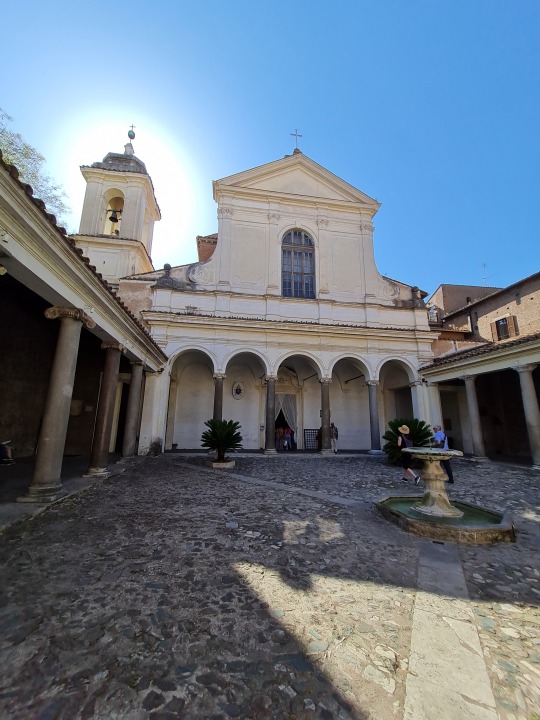
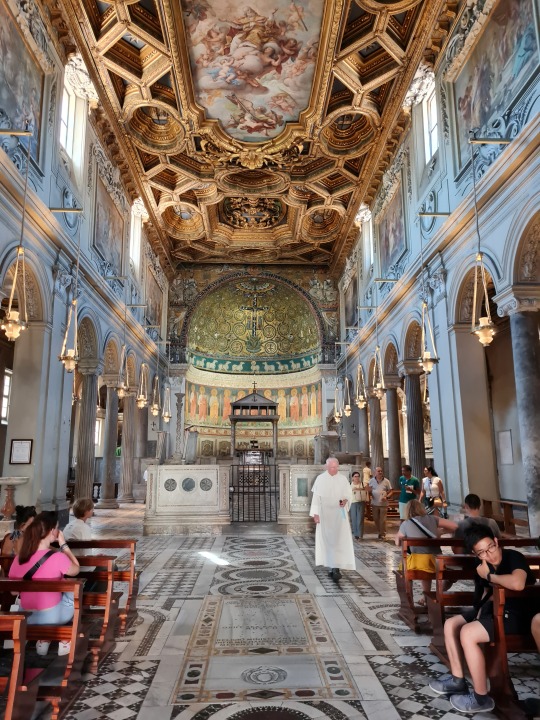
Basilica di San Clemente al Laterano in Rome, Italy
Under the basilica that stems from the 12th century, there are two more layers that you are able to visit: a basilica from the 4th century and a mithraeum from the 2th century.
In my opinion the most interesting church Rome has to offer.
#basilica#san clemente#rome#rome italy#italy#italia#italian architecture#architecture#history#italian history#roman history#ancient rome#church#catholic church#mithraeum#mithras#romanesque#archaeology#roman archaeology#culture#travel#traveling#photography#wanderlust#travel tips#travel blog#travel destinations#explore#travel photography#art
114 notes
·
View notes
Text
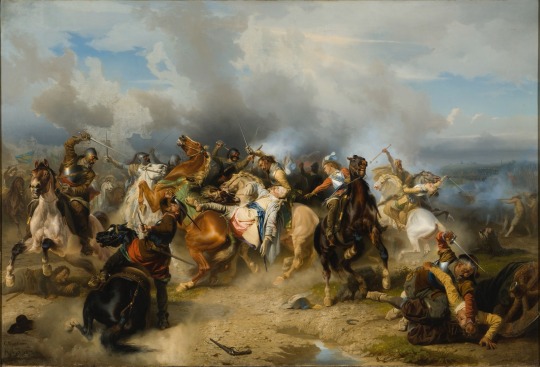
The Death of King Gustav II Adolf of Sweden at the Battle of Lützen
by Carl Wahlbom
#gustavus adolphus#gustav ii adolf#king#death#battle of lützen#art#carl wahlbom#swedish#sweden#thirty years war#history#germany#cavalry#saxony#hesse kassel#holy roman empire#catholic league#protestant#catholic#religious#war#religion#christianity#christian#lützen#europe#european#horse#horses#soldiers
37 notes
·
View notes
Text
the urge to write a jegulily fic set in a fantasy world inspired by 15th century renaissance era italy and the roman catholic papacy
#sorry im in a bit of a fantasy era#and i’ve always been a history nerd#but#imagine like if the grishaverse was roman catholic#these are kinda the vibes i’m imagining#with lots of world building and royalty and a scandalous papacy#and add polyamorous wizards#of course#jegulily
27 notes
·
View notes
Text
Low-key the Roman Catholic Church did kind of a good job of styling itself after Roman aesthetics. Like if you compare reconstructions of Rome at its height and Catholic Cathedrals and other institutions of religious power, the parallels are almost immediately obvious.
48 notes
·
View notes
Note

Burden of proof is on you, theist, not me or any other atheist...

see? I can send pictures too

This is obviously not from the Bible but History! I’m not a Bible thumper by any means.. just saying
#faith#facts#atheist#atheism#christianity#mother mary#the tilma#evidence of life#spirituality#jesus#our lady of guadalupe#science#scientific proof#jesus christ#catholicism#history#human sacrifice#paganism#roman catholic#catholic#saints#juan diego#catholic saints#angels#catholiscism#catholic girl#miraculous#miracles#heaven on earth#heaven and earth
13 notes
·
View notes
Text
"The Spread of Christianity in the British Isles: Monastic Missions and Roman Authority Triumphs"
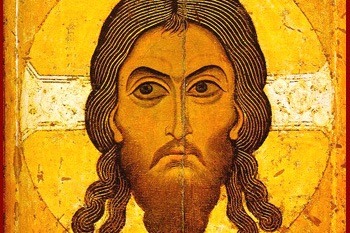
The spread of Arianism among Germanic tribes and the conversion of the Franks to Roman faith were noted. Catholic orthodoxy was gradually accepted by Germanic invaders. However, there was still much to do. The church's vitality during the collapsing empire and opening Middle Ages was shown through its successful extension of Christianity.
Ireland and Scotland
Christianity was present in British Isles before Constantine's conversion. The Roman Empire's downfall weakened it among the Celtic population, while the Anglo-Saxon invaders won much of southern and eastern England for heathenism. Christian beginnings were found mainly in southern Ireland before Patrick. However, he greatly advanced the cause of the Gospel in Ireland and organized its Christian institutions, earning the title of Apostle of Ireland.
Patrick was born in 389 and was the son of a deacon and grandson of a priest. He was trained in Christianity. In 405, he was taken as a slave in Ireland for six years. He was able to escape to the Continent and lived in the monastery of Lérins for some time. In 432, he was ordained a missionary bishop by Bishop Germanus of Auxerre. Patrick then began his work in Ireland, where he spent most of his time in the northeast, with some efforts in the south and west. Despite few facts surviving, there is no doubt about his zeal and his abilities as an organizer. He systematized and advanced Christianity in Ireland. Patrick brought the island into association with the Continent and with Rome.
Patrick introduced the diocesan episcopate into Ireland, but it was soon modified by the island's clan system, resulting in many monastic and tribal bishops. Finian of Clonard (470?-548) developed the unique Irish monasticism, which included strong missionary efforts and notably learned monasteries. The Irish monastic schools were famous in the sixth and seventh centuries, and the monasticism's greatest achievement was its missionary work.
The origins of Christianity in Scotland are unclear. Ninian and Kentigern spread the religion in the 4th and 5th centuries respectively, but not much is known about their work. There is a possibility that the Irish settlers who founded the kingdom of Dalriada in 490 were Christians. However, the most influential missionary was Columba. He founded a successful monastery on the island of Iona and went on to spread the Gospel among the Picts in the northern regions of Scotland. Christianity in Scotland was mainly monastic, with bishops under the authority of Columba and his successors as abbots of Iona.
Missionaries on the Continent
Irish missionaries brought Christianity to northern England, Lindisfarne. Aidan, a monk from lona, established a new Iona on the island in 634. Christianity was then widely spread in the region by Aidan and his associates. These Celtic monks were also active outside of the British Islands. Columbanus, a monk from the Irish monastery of Bangor, founded the monastery of Luxeuil in Burgundy. He later established the monastery of Bobbio in northern Italy, where he died a year later.
Columbanus was one of many Irish monks who worked in central and southern Germany. They introduced private confession to the laity, which was widely supported by the Irish monks. The Irish also created the first penitential books with appropriate satisfactions for specific sins. These books were made familiar on the Continent by the Irish monks.
Roman Missionaries in England
Pope Gregory the Great sent Augustine, a Roman friend, and several monastic companions to convert the Anglo-Saxons. After much struggle, Æthelberht and many of his followers accepted Christianity. Augustine was then appointed as a metropolitan bishop and was authorized to establish twelve bishops under his jurisdiction. It took almost a century for Christianity to become dominant in England, but the movement strengthened the papacy and produced some of the most energetic missionaries on the Continent.
The acceptance of Christianity in England was not without difficulty. After the death of Ethelberht, the power of Kent declined, and with it the initial Christian successes. Northumbria gradually emerged as the leader. In 627, King Edwin of Northumbria was converted to Christianity through the efforts of Paulinus, who later became bishop of York. However, in 633, the heathen King Penda of Mercia defeated and killed Edwin, leading to a heathen backlash in Northumbria.
Under the Christian King Oswald, who had converted while in exile in Iona, Christianity was re-established in Northumbria with the help of Aidan, who represented the Irish or "Old British" tradition (see ante, p. 197). Penda attacked again, and in 642, Oswald was killed in battle. His brother, Oswy, like him a convert of Iona, struggled to secure all of Northumbria, finally succeeding by 651 and earning widespread recognition as an overlord. English Christianity was becoming firmly established.
Roman Authority Triumphs
Since the arrival of the Roman missionaries, there had been disputes between them and their Irish or Old British counterparts. The differences seemed minor, such as the older system of reckoning used by the Irish and Old British, which resulted in diversity regarding the date of Easter. Additionally, the forms of tonsure and the administration of baptism differed. The Old British Church was monastic and tribal while Roman Christianity was diocesan and organized. The Old British missionaries considered the Pope as the highest dignitary in Christendom, but the Roman representatives held him to have judicial authority which the Old British did not fully accept. Southern Ireland accepted the Roman authority around 630, while England made its decision at a synod in Whitby in 664 under King Oswy. Bishop Colman of Lindisfarne defended the Old British usages, while Wilfrid, previously of Lindisfarne but having won for Rome on a pilgrimage and soon to be bishop of York, opposed. The Roman custom regarding Easter was approved, securing the Roman cause in England. By 703, Northern Ireland had followed the same path, and by 718, Scotland. In Wales, the process of accommodation was much slower and only completed in the twelfth century. Pope Vitalian's appointment of a Roman monk, Theodore, as Archbishop of Canterbury in 668 further strengthened the Roman connection in England. Theodore, an organizer of ability, did much to make permanent the work begun by his predecessors.
The combination of the two streams of missionary effort proved advantageous for English Christianity. While Rome contributed order, the Old British added missionary zeal and a love of learning. The scholarship of Irish monasteries was transplanted to England and strengthened by frequent Anglo-Saxon pilgrimages to Rome. Bede, also known as the "Venerable" (672?-735), was a prominent figure in this intellectual movement. He spent most of his life as a member of the joint monastery of Wearmouth and Jarrow in Northumbria. Like Isidore of Seville a century earlier, Bede's learning encompassed the full range of knowledge of his time, making him a teacher for generations to come. He wrote on chronology, natural phenomena, the Scriptures, and theology. He is most famously known for his "Ecclesiastical History of the English Nation," a highly regarded work that is the principal source of information regarding the Christianization of the British Islands.
Annotated Bibliography
- *The Conversion of the Anglo-Saxon Kingdoms* by Richard Fletcher: This book provides a comprehensive overview of the spread of Christianity in England, including the role of Roman and Celtic missionaries and the conflicts that arose between them.
- *Celtic Christianity: Making Myths and Chasing Dreams* by Ian Bradley: This book explores the origins and development of Celtic Christianity, including its unique monastic traditions and how it influenced the spread of Christianity in the British Isles.
- *Saint Patrick's World: The Christian Culture of Ireland's Apostolic Age* by Liam de Paor: This book provides a detailed account of the life and work of Saint Patrick, including his mission to Ireland and his efforts to establish Christianity on the island.
- *Bede: The Ecclesiastical History of the English People* translated by Leo Sherley-Price: This classic work by the Venerable Bede is a primary source for the history of Christianity in England, providing valuable insight into the early church and its leaders.
- *The Life of Saint Columba* by Adomnan of Iona: This biography of Saint Columba, written by one of his contemporaries, provides a detailed account of his life and work as a missionary in Scotland and his establishment of the monastery at Iona.
1 note
·
View note
Text

Polish actor Krzysztof Świłpa as Władysław III of Poland (31 October 1424 – 10 November 1444), also known as Władysław (Ladislaus) III Jagiellon/Władysław of Varna – King of Poland, Hungary and Croatia as well as Supreme Duke of the Grand Duchy of Lithuania
"[...] it was from his reign that the thinking of Poland as the “bulwark of Christianity” started to develop, so popular later in the 16th and 17th century. In the 15th century, during the reign of Władysław III, the term “bulwark” referred rather to Hungary, threatened by the progressing Turkish expansion, but it was precisely for this purpose that the young king of Poland accepted the Hungarian crown – in order to fight for defending the Kingdom of Hungary. Military successes during the so-called “long campaign” (1443/1444) resulted in the fact that he individually became to be referred to as a “bulwark of the entire Christian Commonwealth” – and not by somebody else but by Francesco Filelfo, one of the greatest snobs, but also the most outstanding erudite humanist of the Italian Renaissance, who was sought after by the most outstanding people of the time, including monarchs and even the pope. Prof. Janusz Tazbir correctly notices that it was at that time that the term antemurale Christianitatis – already widespread in Europe – was for the first time used towards the Polish ruler (!) and not the Kingdom of Poland. For the achieved victories, Władysław III as the first Polish ruler received from the Pope a blessed sword – a special distinction for rulers who distinguished themselves in fighting for the defence of Christian faith". (© Ewa Srebro, Maria Curie Skłodowska University in Lublin)

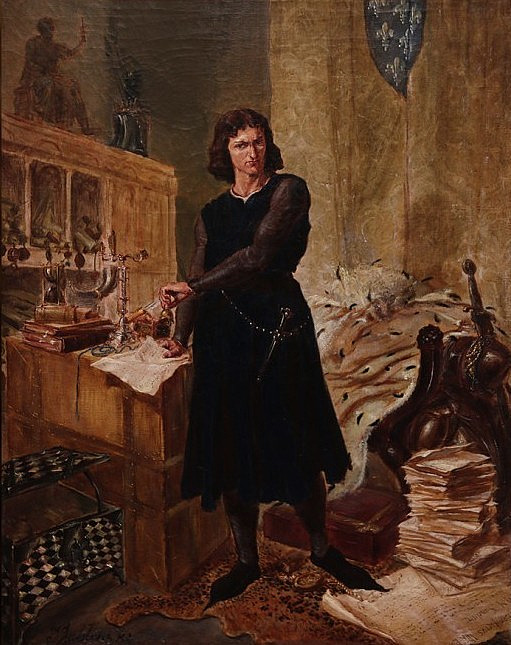
1) Władysław III depicted in a 15th-century prayerbook, 2) Władysław III by Izydor Jabłoński
#władysław warneńczyk#monarchy#ladislaus of varna#krzysztof świłpa#wladyslaw of varna#władysław of varna#poland#hungary#polish history#jagiellonian dynasty#royalty#catholic#catholicism#roman catholic#roman catholicism#15th century#christianity#christian#kingdom of poland#władysław jagiellończyk#historyblr
15 notes
·
View notes
Text

#catholicism#roman catholic#catholic#black america#catholic church#black history month#black catholicism#black catholic#catholic bishop#archbishop
19 notes
·
View notes
Text

x
#art#art history#photography#saint-Étienne church#france#beauvais#architecture#sculpture#religious art#museum#church#books & libraries#religious imagery#religion#christianity#catholicism#catholic art#catholic#roman catholic#light academia#dark academia#light#medieval#medieval europe#medieval art#middle ages#medieval history#12th century#painting#medieval church
31 notes
·
View notes
Text




Short Story Snippet - Of Natural Sin
A conversation in 1542, between a soon to be married woman, and her friend and priest - who is gay and a bastard.
#clearly the conversation is about them reframing that mindset#the girl - lucrezia is set to be married#at the end of the conversation - she finds the power not to be married#but i like the jumping around you know?#like this is a gay priest - who is also a bastard so in his time he would be a natural sin#and she is a woman - and she feels she is a natural sin#the priest has already lived long enough to know that what he believes about himself is false#the self hatred he felt for himself - died down ages ago#the idea that he feels himself a natural sin just doesn't exist -#but#to him#to see another stuck in that mindset#saddens him#i think that there are always comparisons of gay men being natural sins and other men helping them#but i also like the idea of like a gay man helping a woman#this short story takes place in Italy in 1542#the girl is italian the priest is english#writing prompt#writing community#creative writing#european history#religious trauma#religious imagery#adam and eve#roman catholic#catholicism#web weaving#typography#moodboard#writers of tumblr
7 notes
·
View notes